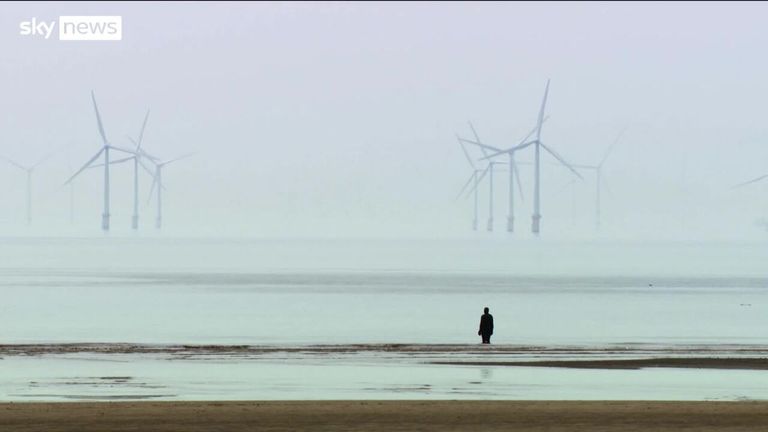The complete failure of the latest offshore wind capacity auction confirms the worst fears – and repeated warnings – of industry and campaigners, and leaves the UK’s key renewable energy target hanging by a thread.
For months, ministers and officials were told the price they had set for the auction was too low to reflect the increased cost of building offshore infrastructure, and for months it seems they were ignored.
One source recalls an official saying the industry’s claims of soaring cost pressures, both in the supply chain and the price of borrowing, simply were not believed.
Surveying the wreckage of an auction that attracted not a single watt of new offshore wind power there can be little doubt they were right.
Until now, the UK’s auction system has been a roaring success.
They offer state support in the form of “contracts for difference” (CfDs) that guarantee future prices to both generators and consumers.
When wholesale electricity prices are lower than the agreed price the Treasury makes up the difference to the generator.
When they’re higher, as they have been since before the Ukraine war began, the supplier pays money back to the taxpayer.
The system has incentivised an explosion in capacity at ever lower prices, and that success spurred the ambitious target of trebling capacity from the 14 gigawatts (GW) today, providing 40% of our electricity last year, to 50GW.
But this year’s auction has run into a brick wall in the shape of a wholly unrealistic guide price – the maximum that can be charged – of £44 per megawatt hour (MWh) in 2012 prices (a quirk of the system is they use 2012 prices), around £60 today.
In a functioning auction, generators bid below that figure until a consensus “strike” price is reached.
Tellingly last year, when the price pressures were starting to bite, the strike price was £37.35, not far off the reference this time round and certainly not nearly enough to entice bids.
Read more:
Government to relax onshore wind planning rules
Could an onshore wind farm end up on your doorstep?
The UK is not alone in struggling to price offshore wind.
Both Spain and the US have had problematic recent auctions.
By way of comparison however, Ireland’s first offshore wind auction earlier this year set a guide price of €150 (£129) and attracted 3GW of capacity at €86MWh (£74) far less than expected, but almost 70% higher than the UK’s optimistic number.
Cost pressures
Other renewable technologies are also facing cost pressures.
The auction round did deliver 2.2GW of new solar capacity, but only at precisely the reference price of £47MWh, and 1.5GW of new onshore wind came in at £52.29MWh, a discount of just 71p on the guide price.
That should tell the energy department and its new secretary of state Clare Coutinho that there is no fat or appetite for risk in energy company budgets.
Challenge
Whether wilful, ill-judged or negligent, the failure of this year’s auction leave government with the challenge of how to adapt the system to give it a chance of keeping net zero targets on track.
After securing 7GW of new offshore wind capacity last year, this year there is none, and a dead year is probably terminal to that 50GW target.
Industry body Energy UK estimates the next two auctions will have to attract twice as much capacity as has been achieved in any previous auction to stay on track.
Renewable energy remains the key to decarbonisation and in offshore wind the UK is blessed with an abundant and secure supply, with every new watt displacing expensive natural gas from the grid.
To have any chance of delivery however the whole sector – government, regulators, industry and ultimately consumers – will have to address the reality of rising costs and competition.





Leave a Reply